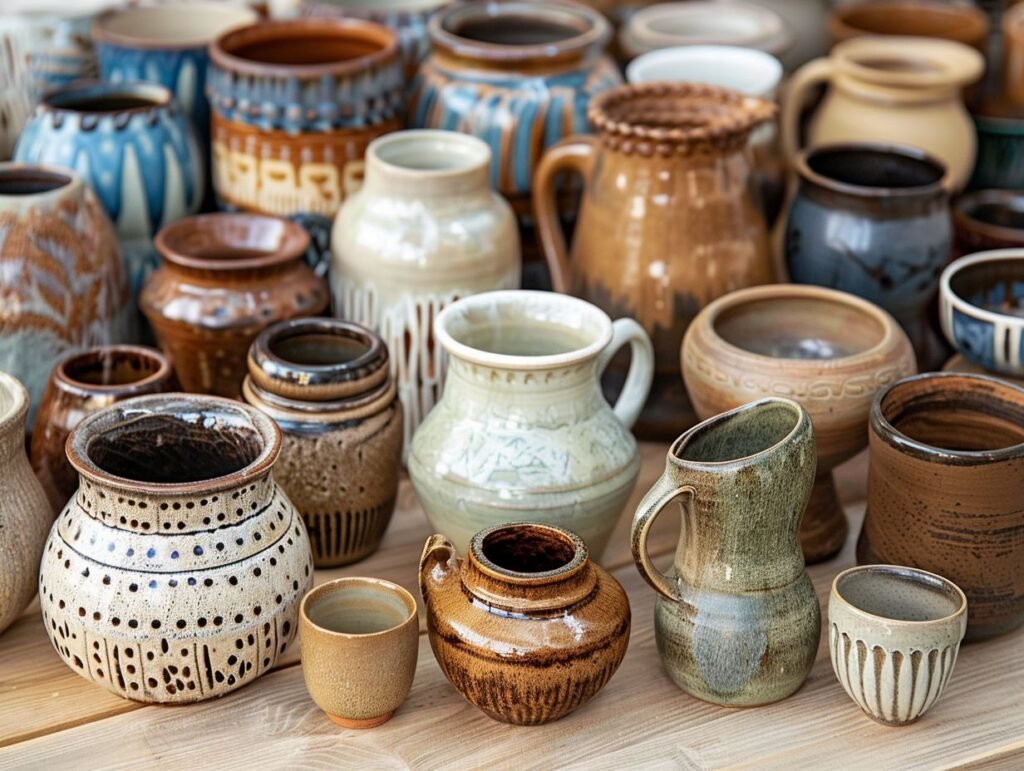Pottery is not just a form of art; it is a reflection of human history and culture. We will explore the fascinating world of pottery, from its ancient origins to the modern techniques used today. Discover the different types of pottery, how it is made, the tools and techniques involved, its various uses, and how to care for and collect these precious pieces. Join us on a journey through time and discover the beauty and significance of pottery.
History of Pottery
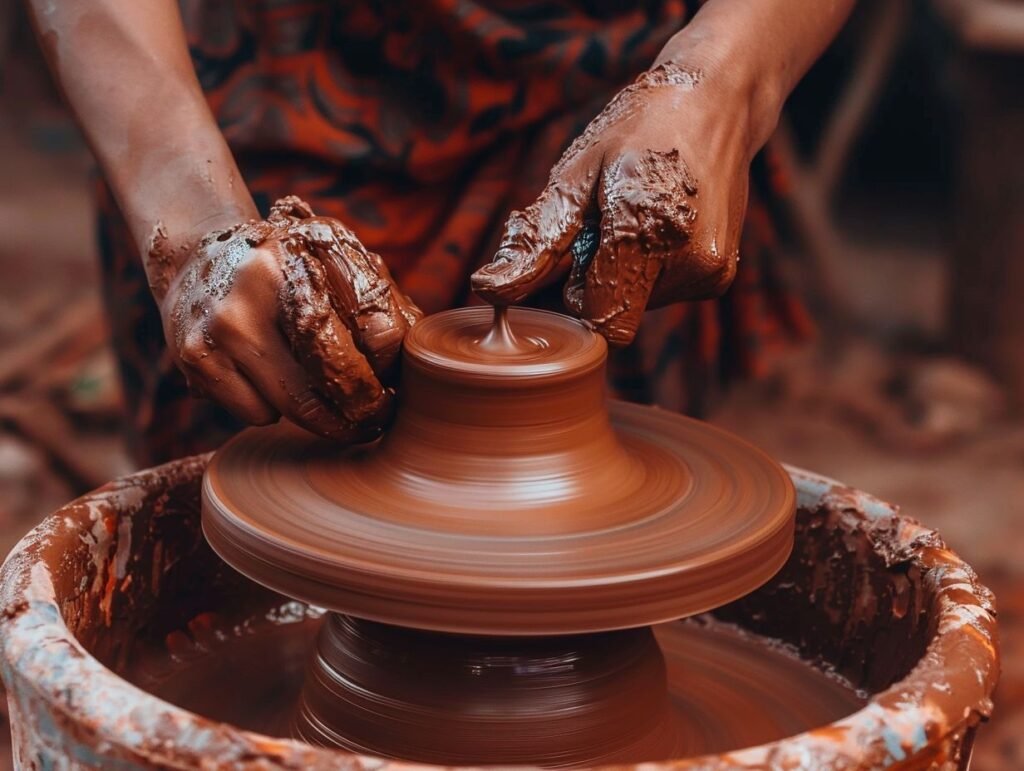
Pottery has a rich history dating back to ancient civilizations such as China and Japan, evolving through time in countries like England during the Industrial Revolution. Notable figures like Bernard Leach played a pivotal role in shaping pottery as an art form using various materials and techniques.
This evolution in pottery was not limited to one region, as different cultures and civilizations also made significant contributions. For instance, the intricate designs of Islamic pottery or the classical elegance of Greek ceramics. These diverse influences led to a melting pot of creativity and innovation in the world of pottery.
Where and When Did Pottery Begin?
The origins of pottery can be traced back to ancient times, particularly during the Neolithic period, where ceramic objects were crafted in regions like the Czech Republic.
Pottery played a crucial role in the evolution of human civilization, marking a significant shift from mere survival to creative expression and symbolic representation. In its early forms, pottery served both practical and ceremonial purposes, with artisans focusing on creating vessels for food storage, cooking, and religious rituals.
During this period, pottery-making techniques evolved, with potters experimenting with different clays, firing methods, and decorative elements. The use of the potter’s wheel revolutionized the craft, enabling artisans to produce more intricate and uniform pieces.
How Has Pottery Evolved Over Time?
The evolution of pottery over time has seen a shift from simple vessels to intricate art pieces, reflecting creative expression and even incorporating health benefits. Today, pottery classes in cities like San Francisco and San Diego offer individuals an avenue to explore this ancient craft.
Throughout history, pottery has been a vital form of artistic expression, with ancient civilizations like the Greeks and Egyptians infusing their cultural identities into each handcrafted piece. The art of pottery has not only served utilitarian purposes but has also been a means of storytelling and preserving traditions. As technology advanced, pottery techniques evolved, leading to the creation of delicate porcelain, vibrant glazes, and intricate designs.
The emergence of pottery classes in urban centers has sparked a renaissance in this traditional art form, attracting enthusiasts seeking both creative fulfillment and stress relief. These classes not only teach the fundamentals of pottery-making but also promote mindfulness and relaxation, tapping into the therapeutic benefits of working with clay.
Types of Pottery
Pottery comes in various types including earthenware, stoneware, and porcelain, each distinguished by specific materials, forming techniques, and firing processes.
Earthenware, the most common type of pottery, is made from clay with a porous texture and fired at relatively low temperatures. Stoneware, on the other hand, is created using high-fired clay that is denser and more durable than earthenware. Porcelain, known for its translucency and strength, is made from fine clay and fired at extremely high temperatures. Each type of pottery requires different forming techniques, such as throwing on a wheel or hand-building, and specific glazes or decorations to enhance its appearance.
Earthenware
Earthenware pottery is known for its rustic appeal, often made using lower firing temperatures and a variety of colorful glazes to enhance its aesthetic charm.
Earthenware pieces are usually fired at temperatures ranging from 1,800 to 2,100 degrees Fahrenheit, resulting in a porous finish that may be sealed with a transparent glaze to make it waterproof but still breathable.
Decorative patterns and designs are meticulously etched or painted onto the surface of the pottery before the final firing process to create unique and intricate pieces. The glazes used in earthenware pottery can range from earthy browns and greens to vibrant blues and reds, adding depth and character to the finished product.
Stoneware
Stoneware pottery is prized for its durability and is fired at high temperatures in a kiln, often decorated with intricate designs influenced by traditions like those in the Czech Republic.
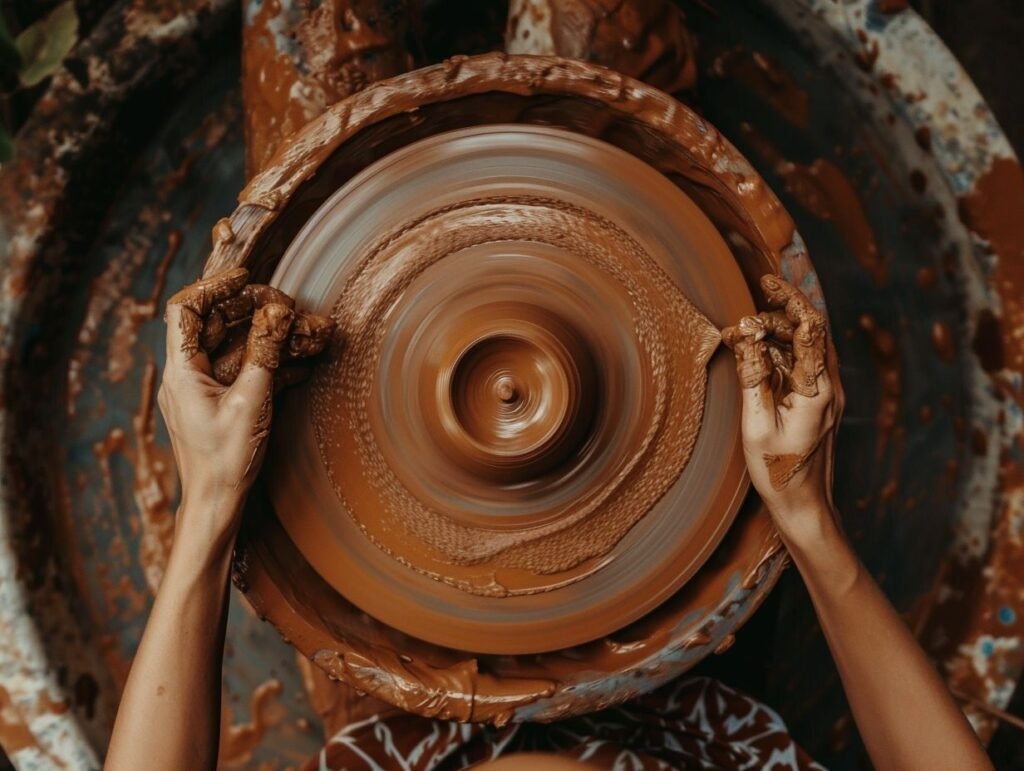
During the kiln firing process, stoneware undergoes a transformation as it reaches extreme heat levels, resulting in its characteristic strength and impermeability. Decorative techniques play a vital role in enhancing the aesthetic appeal of stoneware, with artisans incorporating various methods such as slip trailing, sgraffito, and glaze application to create unique patterns and textures. These techniques have been passed down through generations, reflecting the rich cultural influences that shape stoneware pottery around the world.
Porcelain
Porcelain pottery is renowned for its delicate beauty and translucency, achieved through meticulous bisque firing, glazing, and painting processes.
This exquisite form of pottery, known for its elegant appearance, is distinct for the way it undergoes a firing process called bisque firing. During this initial firing, the clay body is hardened without any glaze, ensuring a strong foundation for the intricate designs later added. Once the bisque firing is complete, skilled artisans employ various glazing techniques, whether dipped, brushed, or sprayed, to enhance the finish and create unique colors and textures. Glazing plays a crucial role in determining the final look of porcelain pieces, affecting both their aesthetic appeal and functionality.
How is Pottery Made?
Pottery making involves the skilled preparation of clay, shaping and forming using various techniques, followed by drying and firing at high temperatures to create durable ceramic pieces.
Once the clay is sourced and cleaned, it needs to be wedged to remove air bubbles and ensure uniform consistency. This step is crucial to prevent cracking during firing. The potter then uses a wheel or hand-building techniques to shape the clay into intricate designs and functional forms.
After shaping, the pieces are left to dry slowly to avoid warping or breakage. The firing process is a critical stage where the pieces are subjected to intense heat in a kiln, reaching temperatures that vary depending on the type of clay and desired finish.
Preparation of Clay
The initial phase of pottery involves the meticulous preparation of clay, where artists select the appropriate material and apply specific techniques to achieve desired results.
Clay preparation is a crucial step in pottery making as it sets the foundation for the entire creative process. Clay is carefully sourced for its plasticity and texture, ensuring it is suitable for molding. Artists often mix different types of clay to achieve the desired consistency and color palette.
Techniques such as wedging, kneading, and aging are employed to remove air bubbles, improve plasticity, and enhance workability. This meticulous process ensures that the clay is uniform and free from impurities, resulting in high-quality finished pieces.
Artists play a vital role in this stage, using their expertise to manipulate the clay into various forms, whether it be hand-building or wheel-throwing. Their skill and precision during clay preparation directly influence the outcome of the final piece, making it a truly collaborative effort between the artist and the material.
Shaping and Forming
Shaping and forming pottery require skilled techniques that artists use to sculpt the clay, creating intricate vessels, cups, mugs, and even sculpture pieces.
The process of shaping pottery involves a delicate balance of creativity and technical precision.
- Artists begin by wedging the clay to remove air bubbles and ensure uniform consistency.
- They then use a variety of tools, such as pottery wheels or hand-building techniques, to mold the clay into the desired shape.
- Each piece requires meticulous attention to detail, from smoothing the surfaces to refining the edges.
- Clay artists may also incorporate unique textures or designs, adding character and flair to their creations.
Whether crafting functional items like cups and mugs or intricate sculptures, pottery artists infuse their work with a blend of skill, creativity, and passion.
Drying and Firing
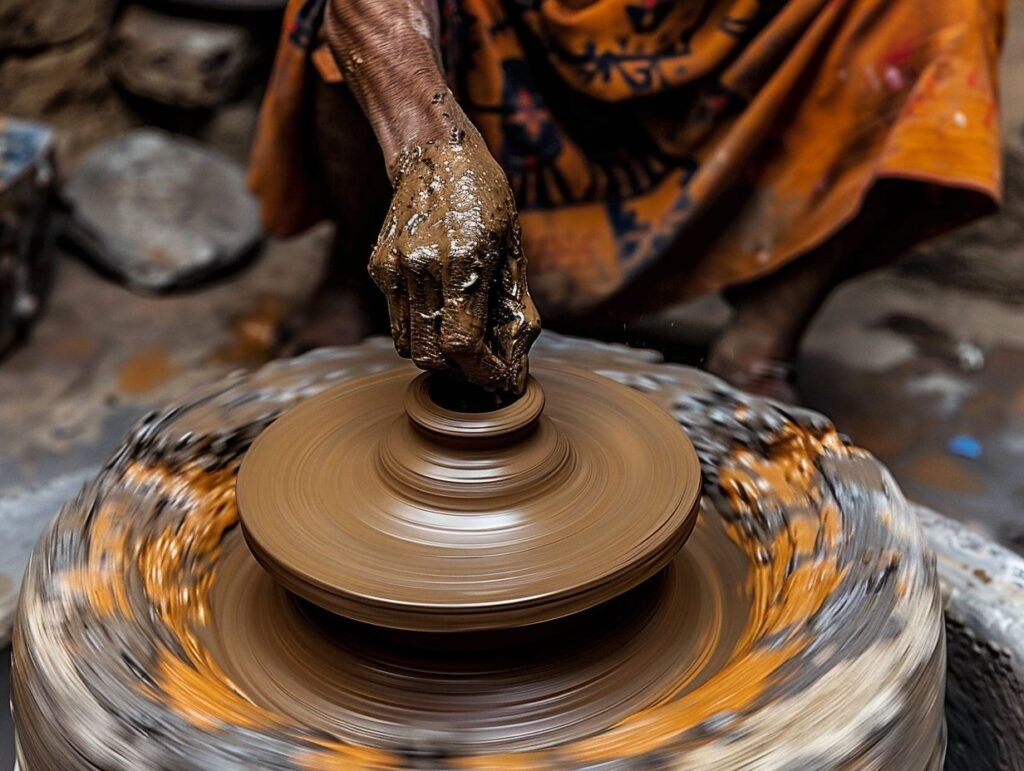
The final steps in pottery-making involve drying the formed clay pieces and subjecting them to firing in a kiln at high temperatures, a critical process that transforms the clay into durable ceramic art.
During the drying stage, the pottery pieces are left to air dry slowly to prevent cracking. This phase requires patience, as rushing it can lead to deformities in the clay. Once the pieces are completely dry, they are ready for the firing process, which takes place in a kiln. The kiln is a specialized oven that reaches high temperatures to solidify the clay and create the finished ceramic pieces. Various materials, such as glazes and oxides, can be applied before firing to add color and texture to the pottery. Firing times and temperatures vary depending on the type of clay and desired outcome, with some pieces undergoing multiple firings for intricate designs.
Tools and Techniques Used in Pottery
Pottery artisans rely on a range of tools and techniques such as wheel throwing, hand building, and glazing to bring their creative visions to life in the form of unique ceramic pieces.
Wheel throwing, considered one of the oldest pottery techniques, involves creating pottery on a spinning wheel. This method allows the artisan to craft symmetrical and visually appealing pieces with precision.
Hand building, in contrast, showcases the artisan’s skill in shaping clay without the use of a wheel. It offers more flexibility in design, allowing for intricate details and varied forms.
Glazing plays a crucial role in the final aesthetic of ceramic pieces. It involves applying a layer of liquid glass to the pottery before firing, resulting in vibrant colors and finishes.
Wheel Throwing
Wheel throwing is a fundamental pottery technique where artists shape clay on a rotating wheel to create various items like vases, cups, and mugs with precision and skill.
Artists who specialize in wheel throwing are able to manipulate the clay with finesse, seamlessly transforming a simple lump of earth into a functional and visually appealing piece of art.
Using their hands and tools, they deftly guide the spinning wheel to sculpt delicate curves, intricate patterns, and unique designs, showcasing their mastery of the craft.
Hand Building
Hand building in pottery involves the manual construction of clay pieces, allowing artists to express their creativity through intricate sculptures and unique ceramic art.
This method of pottery creation relies on shaping the clay by hand, without the use of a pottery wheel, allowing for more organic and textured forms to be crafted. Artists utilize various techniques such as pinching, coiling, and slab construction to mold the clay into desired shapes, often incorporating texture and detail that are difficult to achieve through other pottery techniques. Hand building is a time-honored tradition in the world of ceramics, dating back centuries and serving as a foundation for many contemporary sculptures and functional pottery pieces.
Glazing
Glazing is a decorative technique in pottery that involves applying various colors and finishes to clay pieces before subjecting them to glaze firing, resulting in vibrant and visually appealing ceramic art.
When an artist decides to glaze a piece, they embark on a meticulous process that requires precision and creativity.
- First, the clay item is carefully cleaned to ensure the glaze adheres properly.
- Then, using brushes, sprayers, or even dipping techniques, the artist applies the chosen glaze type, whether it be transparent, opaque, matte, or glossy.
- After the glaze application, the pottery piece undergoes a high-temperature firing process in a kiln, where the glaze transforms into a beautiful, glassy finish that enhances the colors and textures of the piece.
Uses of Pottery
Pottery serves various purposes, from functional uses such as tableware to decorative applications in art, and even cultural and ritualistic functions in different societies.
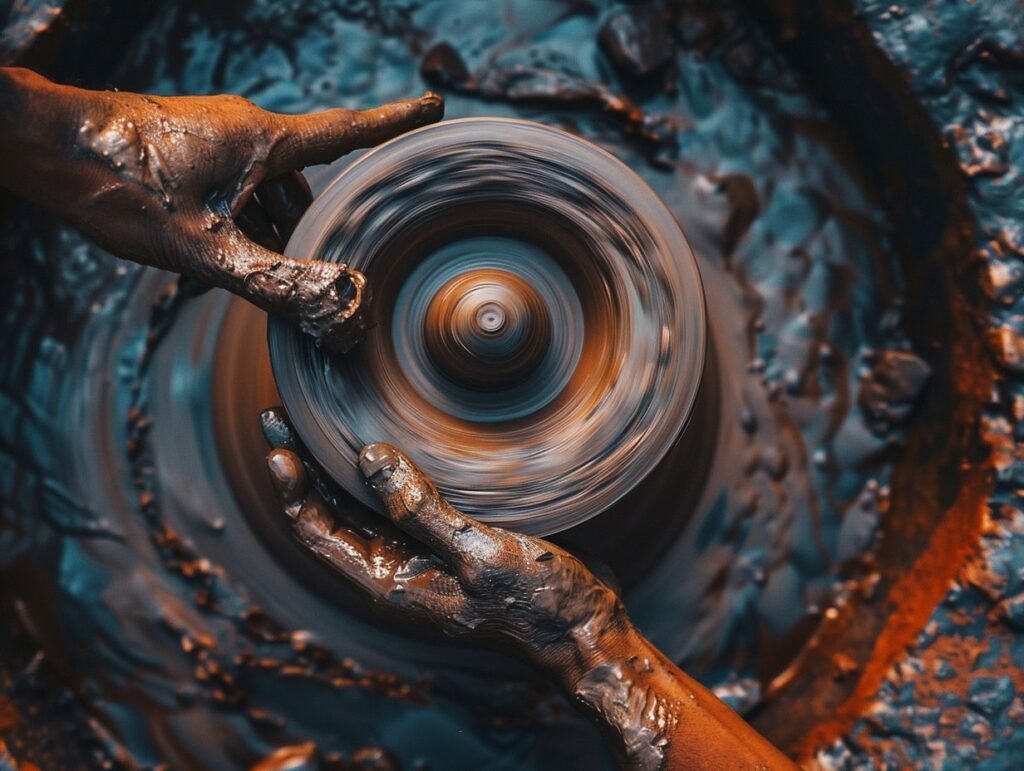
Tableware crafted from pottery, like bowls and plates, provides practical utility in serving and consuming food. In artistic expressions, pottery adds a touch of creativity and beauty to both everyday objects and elaborate sculptures. The cultural significance of pottery can be seen in various ceremonies and traditions where it symbolizes heritage, status, or spiritual beliefs. From ancient civilizations to modern times, pottery continues to play a vital role in human expression and connection to the past.
Functional Pottery
Functional pottery includes items like vessels, coffee mugs, and vases that are designed for everyday use, combining practicality with aesthetic appeal.
These versatile pieces serve essential functions in households and add a touch of artistry to daily rituals. Whether it’s a sturdy vessel for storing grains or a delicately crafted vase adorning a table, functional pottery seamlessly blends into various aspects of daily life.
Coffee mugs, in particular, are emblematic of the cozy morning routine, offering warmth and comfort with each sip. The design of these mugs can range from sleek modern styles to earthy rustic textures, catering to diverse preferences.
Decorative Pottery
Decorative pottery encompasses artistic sculptures and unique art pieces that serve as visual ornaments and expressions of creativity.
It is a craft deeply rooted in cultural traditions, with each piece telling a story of its own. The intricate designs and vibrant colors of decorative pottery captivate the beholder’s gaze, offering a glimpse into the artisan’s imagination and skill. Decorative pottery has been used for both functional and decorative purposes throughout history, from ancient civilizations to modern-day interior design trends. Its versatility allows for a wide range of styles and techniques, making it a beloved form of art across various cultures worldwide.
Cultural and Ritualistic Uses
Pottery plays a significant role in various cultures and rituals, preserving historical traditions and customs, as seen in practices in regions like the Czech Republic.
Throughout history, pottery has been central to human civilization, with evidence of its importance found in ancient civilizations such as the Egyptians and Greeks. The art of pottery not only serves practical purposes but also carries immense symbolic and cultural significance, often linked to spiritual beliefs and ceremonies. Each culture infuses its unique elements into pottery-making, resulting in diverse styles and designs that reflect the essence of a particular region. For instance, in Japan, pottery is deeply intertwined with the concept of wabi-sabi, the beauty of imperfection and transience.
In many societies, pottery-making is a communal activity, bringing people together to create vessels that hold meanings beyond their physical form. These vessels are often used in rituals and ceremonies, such as weddings, funerals, and religious practices. The intricate patterns and motifs painted on pottery pieces often tell stories of ancestry, folklore, and spiritual beliefs, serving as a visual representation of a community’s collective memory and identity.
Caring for and Collecting Pottery
Caring for and collecting pottery involves proper cleaning and maintenance to preserve its beauty, as well as techniques for identifying and valuing unique pieces in a collection.
Regarding cleaning pottery, it’s essential to handle these delicate pieces with care. One common method is using a soft, damp cloth to gently wipe away dust and dirt. For stubborn stains, a mild soap diluted in water can be used, but always test on a small inconspicuous area first.
To maintain the longevity of pottery, avoid extreme temperature changes and direct sunlight exposure, as these can cause cracks or fading. Proper storage in a controlled environment can help prevent damage over time.
Identifying pottery often involves examining the maker’s marks, such as signatures or logos, and researching specific characteristics of different pottery styles and periods.
Valuing pottery can be a nuanced process, taking into account factors like condition, rarity, and current market trends. Consulting with experts or appraisers can provide valuable insights into the worth of your pottery collection.
Cleaning and Maintenance
Cleaning and maintaining pottery items is essential to ensure their longevity and prevent damage, with a focus on safe materials and practices to protect both the pieces and the individual’s health.
Proper care not only enhances the beauty of your pottery but also maintains its structural integrity. Regular cleaning prevents the build-up of dirt and grime, which can lead to discoloration or even cracks over time. Using gentle cleaning agents and soft cloths can help preserve the delicate surfaces without causing any harm. It is vital to avoid harsh chemicals or abrasive scrubbers that can scratch or erode the pottery’s finish.
By adopting proper maintenance routines, you can prolong the lifespan of your cherished pottery collection, turning them into enduring family heirlooms. Taking the time to clean and store your pottery correctly can significantly reduce the chances of accidental breakage or deterioration.
Identifying and Valuing Pottery
Identifying and valuing pottery pieces involves understanding their history, materials used, and unique characteristics to determine their significance and worth in the pottery market.
Within the historical context, pottery has played a crucial role in various civilizations, reflecting cultural practices and artistic expressions.
Material analysis is a key aspect of this process, as it allows experts to identify the type of clay, techniques used in production, and potential age of the piece.
Understanding these details can greatly influence the valuation of pottery, as rarity, craftsmanship, and provenance are all factors that impact its value in the eyes of collectors and enthusiasts.
Frequently Asked Questions
What is Pottery?
Pottery is the art and craft of forming objects with clay and other ceramic materials, which are then fired to harden and preserve them.
What are the different types of pottery?
There are three main types of pottery – earthenware, stoneware, and porcelain. Each type has its own unique characteristics and uses.
What is the history of pottery?
Pottery has been around for thousands of years and has been used by different cultures for both practical and artistic purposes. It has evolved and changed over time, with various techniques and styles emerging in different regions of the world.
What tools are used in pottery?
The most common tools used in pottery include a wheel for shaping the clay, various types of carving and shaping tools, and a kiln for firing the pottery.
What is the process of making pottery?
The process of making pottery involves preparing the clay, shaping it into the desired form using various techniques, drying the piece, and then firing it in a kiln. The final step is often glazing, which adds a decorative finish to the pottery.
What can be made with pottery?
Pottery can be used to create a wide range of objects, including functional items like bowls, plates, and cups, as well as decorative pieces such as vases, sculptures, and wall hangings.


